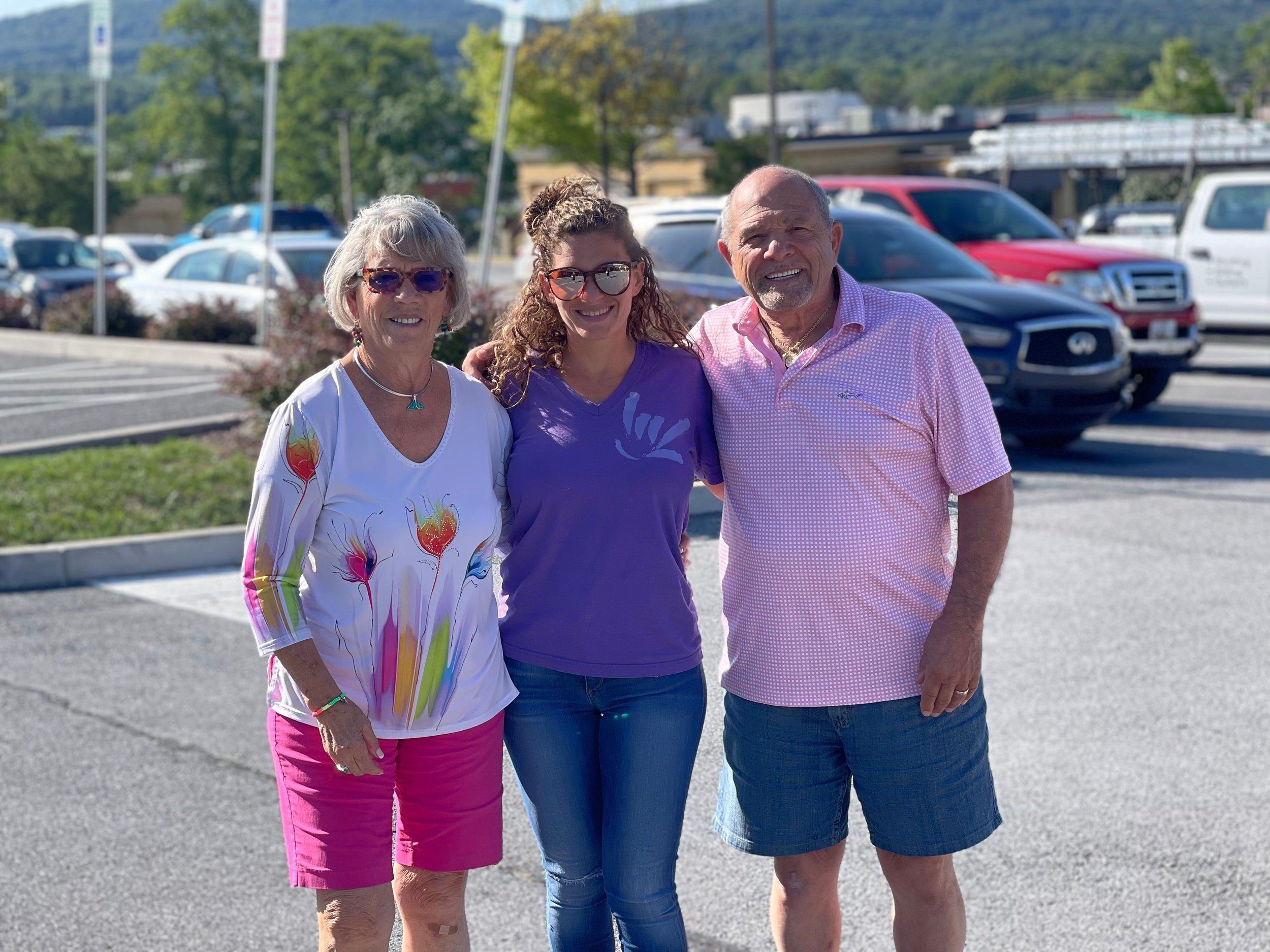My Experience of Being a CODA
My first language wasn’t English. I grew up using American Sign Language (ASL).
I’m a CODA: a Child of Deaf Adults. Both of my parents are Deaf, and I was raised in the Deaf community.
Growing up, being a CODA was the only thing I knew. I was surrounded by other CODAs, and being a “non-CODA” seemed like an anomaly. Because it’s small, the Deaf community is very tight-knit. It was the culture I was born into and the one I grew up in, but as a hearing person, this meant navigating two different worlds.
But at school and outside of the Deaf community, other kids didn't understand what it meant to be a CODA.
I found myself straddling two cultures and modes of relating — without a guide. I was also put in a position of control at a very young age, which gave me skills I still use today but meant I was not a child in the way that many of my peers were. A lot of responsibility fell on my shoulders to ensure that my parents had access to language in any situation they found themselves in.
Other kids made fun of me and my parents, because it can be hard to grasp different experiences when you’re younger. Much of that emerges from a lack of understanding and is a consequence of a lack of equitable access and education around diversity.
Disability and inclusion lessons in schools benefit all of us: it helps children develop empathy, compassion and emotional intelligence. It reduces implicit bias — now and in the future — and it reduces bullying. When this is part of their education, children have the space to build an understanding of what it means to have disabilities or different experiences into their worldview.
As a child, there were — and continue to be — times I found myself entangled between these two cultures, without fully being part of either. I hope that by continuing to share my story and helping elevate other people’s experiences, we can confront unconscious biases and expand all of our perspectives.
Even now, when people find out I’m a CODA, I get asked questions ranging from serious to ridiculous.
Can your parents drive?
Yes, my parents can drive. In fact, there is a lot of research that shows Deaf drivers have better peripheral vision than hearing drivers. I can attest to that from personal experience.
How did you learn to talk?
I began babbling at a young age. The language at home was ASL, and I learned quickly that the language outside my home was English. Both of my parents use their voice, which means I was exposed to both English and ASL at home, with ASL being my primary language. I learned most of my English in the school environment.
How do they talk?
My parents "talk" just like any other person talks. People who are Deaf have a wide range of speech ability, similar to their degree of Deafness. Some Deaf people do not use their voice, while others choose to. It is a personal preference.
Is it weird having Deaf parents?
Only if “weird” means cool and awesome! Really, I’m not looking to compare it to anything else. Having Deaf parents is my experience, and I am grateful for it. Being a CODA shaped me as an individual, a mother, a partner and a community member.
When did you learn Braille?
The Deaf and hard of hearing community uses ASL. Braille is a system of raised dots — it’s a code that can be used by many languages, not a language itself — that people who are blind or are low vision can read with their fingers. (It’s important to note that ASL is not universal; different sign languages are spoken throughout the world, including in other states — there is an ongoing effort in Hawaii to save Hawaii Sign Language.)
__
It’s encouraging to see these stories continue to appear on more mainstream platforms. CODA, a movie about a seventeen-year old girl who is the only hearing member of her family, was recently released by Apple Plus.
It’s notable not only for its portrayal of being a CODA and navigating between the hearing and Deaf cultures, but for celebrating Deaf artists. Only Deaf actors played Deaf characters and 40% of the script is ASL — a very critical moment of representation. I hope this won’t be an outlier in how these narratives are portrayed in the media, but a shift towards more filmmakers embracing authenticity in their movies and stories.
Being a CODA was isolating at times, and I faced — and continue to face — an identity crisis of not being “Deaf.” There can be an uphill battle for CODAs when trying to be allies and advocates for the Deaf community, and raise awareness, but I couldn’t be prouder to be a CODA and to have grown up in this community.
Being a CODA also gave me invaluable skills, made me stronger and more empathic, and surrounded me with wonderful people. And opening myself up to others, sharing my story and listening to others’ stories has given me a deeper appreciation of the love I have for the culture, the community and my experiences. The Deaf community is my home, and I feel very fortunate to be part of it.

